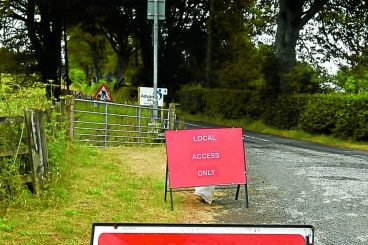AVIAN flu took a huge toll on the Solway’s barnacle geese population but a new report shows it eased this winter and numbers are rising again.
The HPAI outbreak was first detected in late October 2021 and led to the deaths of more than 13,200 barnacle geese locally.
Experts say by the end of that winter, about a third of the ‘flyaway population’ had been killed by the virus.
And it had a longer term impact too with anecdotal evidence suggesting that the breeding population in Svalbard in summer 2022 was down by 30 per cent.
It was still circulating in January 2022 with testing finding postive cases in the region.
But in the winter just past, 22-23, HPAI was at low levels with ‘very few’ reports of dead geese on the Solway.
Furthermore, preliminary monitoring data from the 2022/23 winter suggest the geese had a very good breeding season, this was perhaps in part due to density dependent effects on the breeding grounds which may assist with recovery.
However, a ‘peak count’ of 30,958 geese reported for November 2022 was still considerably lower than the overall season peak of 43,703 reported for 2020/21 before the outbreak.
The major report published by NatureScot, concludes that long-term conservation measures will be the most effective tool against the devastating virus.
The study analysed the unprecedented avian flu outbreak among wild birds since 2021, providing advice to support the work of Scotland’s Avian Flu Task Force.
It assesses that avian flu will likely continue to be an issue among wild birds into the 2023 nesting season and beyond. It finds the most effective solutions will likely be long-term conservation measures for birds which are particularly susceptible, accompanied by enhanced disease surveillance, demographic monitoring, and continued research.
The report also looks at the effectiveness and benefits of short-term measures and provides a picture of how avian flu has affected Scotland’s wild birds so far. It finds that once avian flu is present in a wild bird population, it is very difficult to control or reduce it. Measures such as carcass removal or reducing human activity across sites, for example, are unlikely to significantly reduce the impact of an outbreak.
Alastair MacGugan, a NatureScot wildlife manager, said: “Although there’s no silver bullet to solve this complicated dilemma, this report will be a great help as the Avian Influenza Task Force plan action to reduce the effect of avian flu on Scotland’s important populations of wild birds. This is an upmost priority for our partners and ourselves, as the geographic scale, range of species of wild birds affected, and severity of impacts may threaten the very survival of some species.”
























